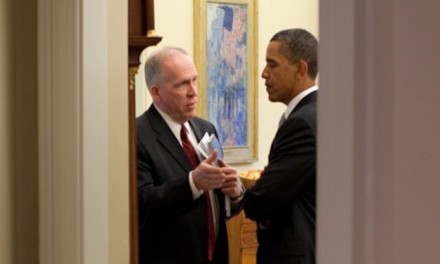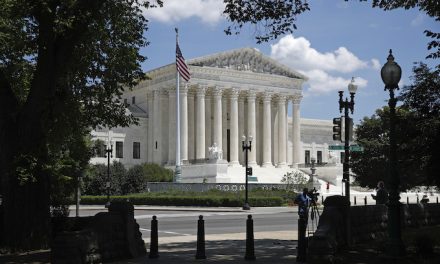The nation will soon be consumed with the voting process as Super Tuesday arrives and the 2020 presidential election becomes a reality. There are, however, a few extra voters on local records to consider.
A new Judicial Watch investigation has discovered 2.5 million names that now clutter “dirty voting rolls” in 378 counties nationwide, with a strong concentration of these mystery voters in California, Pennsylvania, North Carolina, Virginia and Colorado. The watchdog has been monitoring those states in particular to determine compliance with the National Voter Registration Act of 1993, which requires every state to establish federal election voter registration procedures.
Some do not appear to be doing so.
“Voter registration lists across the country remain significantly out of date. According to our analysis of data released by the U.S. Election Assistance Commission, 378 counties nationwide have more voter registrations than citizens old enough to vote,” reports Tom Fitton, president of the organization.
“These 378 counties combined had about 2.5 million registrations over the 100% registered mark,” he says, noting that his organization has fired off “notice-of-violation letters” to 19 large counties in the five aforementioned states.
“We intend to sue unless they take steps to comply with the law and remove ineligible voter registrations within 90 days. Section 8 of the act requires jurisdictions to take reasonable efforts to remove ineligible registrations from their rolls,” Mr. Fitton explains.
It looks like the Golden State still has problems.
“Dirty voting rolls can mean dirty elections and we will insist, in court if necessary, that states follow federal law to clean up their voting rolls. Our previous lawsuits have already led to major cleanups in California, Kentucky, Indiana, and Ohio — but more needs to be done. It is common sense that voters who die or move away be removed from the voting rolls,” Mr. Fitton advises.
SELECTIVE OUTRAGE
Outrage isn’t outrage unless it’s associated with President Trump and his administration, at least on broadcast news, which now suggests the president is more outrageous than criminal activity, according to a new analysis.
“Journalists are using increasingly emotional language in their reports. Case in point: the word ‘outrage,'” writes Bill D’Agostino, an analyst for the Media Research Center, a conservative press watch dog.
He led new research which found the term “outrage” was used 229 times in ABC, CBS and NBC’s evening news reports in 2019.
The study found that the “Big Three” networks blamed Mr. Trump and Republicans for triggering more outrage throughout the year than “child abuse, sexual assault, racism, and even police brutality,” Mr. D’Agostino said.
The study found that the term “outrage” was used in 25 stories on child abuse, 14 stories on sexual assault, 28 times for stories which addressed racism and 45 accounts on police brutality.
“Despite all of the wars, crime and other horrors in the world, the media seemed to think U.S. politics was the biggest cause of outrage, with 64 political stories using the term,” he continued.
“But don’t think the term was employed even-handedly. President Trump and his fellow Republicans received the lion’s share of the blame in this category: 51 instances, or 80% of all political outrage, while Democrats accounted for less than one tenth of that — just five stories, or 8%. For the remaining eight cases, the individuals or organizations said to be causing outrage were not explicitly partisan,” the analyst said.
BACK TO BACK
ABC’s “The View” is now a required stop on the campaign trail, at least for Democrats at this juncture.
Presidential hopeful Sen. Elizabeth Warren will appear on the often spirited daytime talk show Tuesday, followed Wednesday by rival candidate Andrew Yang and his wife, Evelyn Yang.
A VIRTUAL WALL
Issues & Insights editor John Merline points out that only 18 immigrants who were in the U.S. illegally were detained at the Southern U.S. border last week, then sent back to Mexico while their asylum claims are reviewed. That action is the result of President Trump’s “Migrant Protection Protocols” — also known as “MPP” or the “Remain in Mexico” protocol — a new practice which replaces the “catch and release” thinking of the previous administration.
“What ‘Remain in Mexico’ revealed is how few asylum seekers have legitimate claims. In fact, judges granted asylum in less than 1% of the more than 10,000 MPP claims resolved so far, according to TRAC Research Center at Syracuse University. The impact of this program has been little short of profound,” writes Mr. Merline.
“The number of apprehensions at the southwest border plummeted from 144,000 in May 2019 to just 42,649 in November — the last month for which the government has data. The number of families caught crossing illegally went from 84,486 in May to a mere 9,000 in November,” he says.
A Government Accountability Office report released in December also found that arrests of undocumented immigrants increased 34% from 2015 to 2018, while detentions went up 35% and removals rose 13%.
“As the El Paso Times put it, the policy has proved to be a ‘virtual’ wall,” Mr. Merline says.
SIZING UP ‘THE SQUAD’
Ever vigilant C-SPAN continually tracks the performance of Congress, including the number of times lawmakers get up and have a say on Capitol Hill. Rep. Glenn Thompson, Pennsylvania Republican, is in first place, appearing on the House floor on 121 days in 2019, followed by Rep. Sheila Jackson Lee, Texas Democrat, who appeared on 95 days.
But what about the members of “The Squad,” the quartet of freshman Democratic women who receive much media coverage, much centered on their criticism of President Trump and his administration?
Their research found that Rep. Rashida Tlaib of Michigan was the most vocal of the four, appearing on 34 days. Rep. Ayanna Pressley of Massachusetts was in second place with 18 days, while Rep. Ilhan Omar of Minnesota ranked third with 16 days. And in last place: Rep. Alexandria Ocasio-Cortez of New York, who only spoke before her peers on 10 days.
POLL DU JOUR
• 17% of Americans say there are more U.S. combat deployments now than 10 years ago; 14% of Republicans, 16% of independents and 22% of Democrats agree.
• 32% of Americans say there are the same number of deployments as 10 years ago; 29% of Republicans, 31% of independents and 34% of Democrats agree.
• 29% overall say there are fewer than 10 years ago; 42% of Republicans, 27% of independents and 23% of Democrats agree.
• 22% overall say there are not sure about the number of deployments; 15% of Republicans, 26% of independents and 21% of Democrats agree.
Source: An Economist/YouGov poll of 1,500 U.S. adults conducted Dec. 28-31.
• Helpful information to [email protected]
© Copyright (c) 2020 News World Communications, Inc.
—-
This content is published through a licensing agreement with Acquire Media using its NewsEdge technology.


















Recent Comments